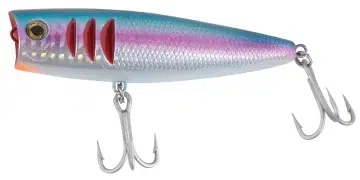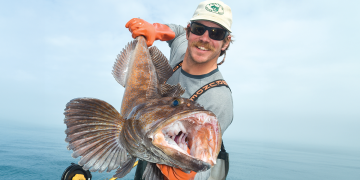Master How To Set the Hook: Useful Techniques for Better Fishing Success

There are many ways a fish can slip your hook, but none matter if you don’t stick that lunker first.
For rookie anglers, the process to set the hook is a hurdle that must be conquered to increase catch consistency. There really is a bit of science behind it, but the sooner one begins to examine the task, the quicker scores are likely to progress. The first thing to know, however, is that the true key to understanding the process lies less in technique than in realizing how the bite was generated in the first place.
Understanding Hook Setting for Different Baits
For example, there is a big difference between the types of strikes you’ll encounter while using real bait—dead or live—compared to tempting quarry with artificial lures. In the first instance, you’re really trying to feed the fish so that the hook ends up in its mouth. In the latter, the goal is to fool your target. The difference may seem subtle, but it’s not.
Real baits have a familiar scent, feel, and taste that reassures an interested prospect things are on the up-and-up. Given a few seconds to allow for inspection, chances are that your shrimp, clam, sea worm, cut bait, or even live pilchard or bunker will be inhaled—ensuring a reasonable chance at a solid hookup.
In this situation, an index finger held lightly against a tight line should allow an angler to feel a fish pickup or grab the bait. Rather than strike at the very first tap, it’s a good idea in most situations to simply tighten up on the line while lowering the rod tip toward the water to remove all slack. At this point, lift the rod tip softly and slightly to see if you feel weight at the end of the line. If so, continue lifting while gradually gathering speed until a snap of the wrist finally drives home the barb as the rod comes past horizontal and continues to a 45-degree angle above the water.
Oftentimes, with the “slow-lift” hook set described above, fish respond to the lift with a solid downward tug, setting the hook by themselves. My interpretation of that phenomenon is they sense the bait is being pulled away, and so gobble it quickly to prevent escape.
For fishing around wrecks, rocks, and shellfish beds for hard-lipped, rugged species like blackfish, triggerfish, large sheepshead, grouper, etc., this same basic method works fine with two modifications.
First, set the hook a bit harder to drive the hook point solidly into those tougher mouths. Second, continue lifting the rod upward until the reel is overhead after setting the hook. This will get the fish heading in an upward direction and away from any potential holes or snags on the bottom into which it might dive in the hopes of sanctuary. Once you get a few feet of line on the spool, you can lower your rod to a more comfortable position while continuing to crank a tight line.
Subscribe Here For More Fishing Content
Advanced Techniques to Set the Hook with Artificial Lures
At the other end of the spectrum, hard-bodied lures, including diamond jigs, spoons, and swimming plugs, as well as most soft plastic swim baits, are usually presented in a swimming or jigging manner in the hope of drawing reaction strikes from fish that merely catch a quick glimpse of your lure going by and instinctively respond as to not miss out on a potential meal.
In this instance, I like to set the hook with a medium-strength strike for low intensity bites and a stronger strength strike for intense interceptions. The medium-strength hook sets are meant to not tear the lure from the mouth of a somewhat uncommitted predator. Harder strikes receive a harsher response to more quickly impale the attacker, which will instantly realize it’s been duped upon feeling hard-plastic, a lead head jig, or metal lure on impact with its jaws.
The use of surface poppers presents yet a third hook-set response. In this case, fish crash the surface and inhale a popper, spook, bottle plug, or similar surface offering with full ferocity. Set too quickly, however, and you’ll pull the lure right out of that gaping mouth. In this case, it serves well to tip the rod tip toward the fish for one second as it explodes on the lure, then rear back hard. This slight hesitation allows a lunker to inhale your plug and turn for the bottom, ensuring your hooks will grab the lips as your line comes tight.
-by Tom Schlichter
Related Posts
var jnews_module_54106_2_66d2340eb293b = {“header_icon”:””,”first_title”:”Related”,”second_title”:” Posts”,”url”:””,”header_type”:”heading_6″,”header_background”:””,”header_secondary_background”:””,”header_text_color”:””,”header_line_color”:””,”header_accent_color”:””,”header_filter_category”:””,”header_filter_author”:””,”header_filter_tag”:””,”header_filter_text”:”All”,”sticky_post”:false,”post_type”:”post”,”content_type”:”all”,”sponsor”:false,”number_post”:{“unit”:”px”,”size”:5,”sizes”:[]},”post_offset”:0,”unique_content”:”disable”,”include_post”:””,”included_only”:false,”exclude_post”:54106,”include_category”:”6186″,”exclude_category”:””,”include_author”:””,”include_tag”:””,”exclude_tag”:””,”category”:””,”post_tag”:””,”jobpost_category”:””,”jobpost_job_type”:””,”jobpost_location”:””,”jobpost_tag”:””,”sort_by”:”latest”,”date_format”:”default”,”date_format_custom”:”Y/m/d”,”force_normal_image_load”:””,”pagination_mode”:”disable”,”pagination_nextprev_showtext”:””,”pagination_number_post”:{“unit”:”px”,”size”:5,”sizes”:[]},”pagination_scroll_limit”:{“unit”:”px”,”size”:3,”sizes”:[]},”boxed”:””,”boxed_shadow”:””,”el_id”:””,”el_class”:””,”scheme”:””,”column_width”:”auto”,”title_color”:””,”accent_color”:””,”alt_color”:””,”excerpt_color”:””,”css”:””,”excerpt_length”:{“unit”:”px”,”size”:20,”sizes”:[]},”paged”:1,”column_class”:”jeg_col_3o3″,”class”:”jnews_block_9″};
The post Master How To Set the Hook: Useful Techniques for Better Fishing Success appeared first on Southern Boating.










